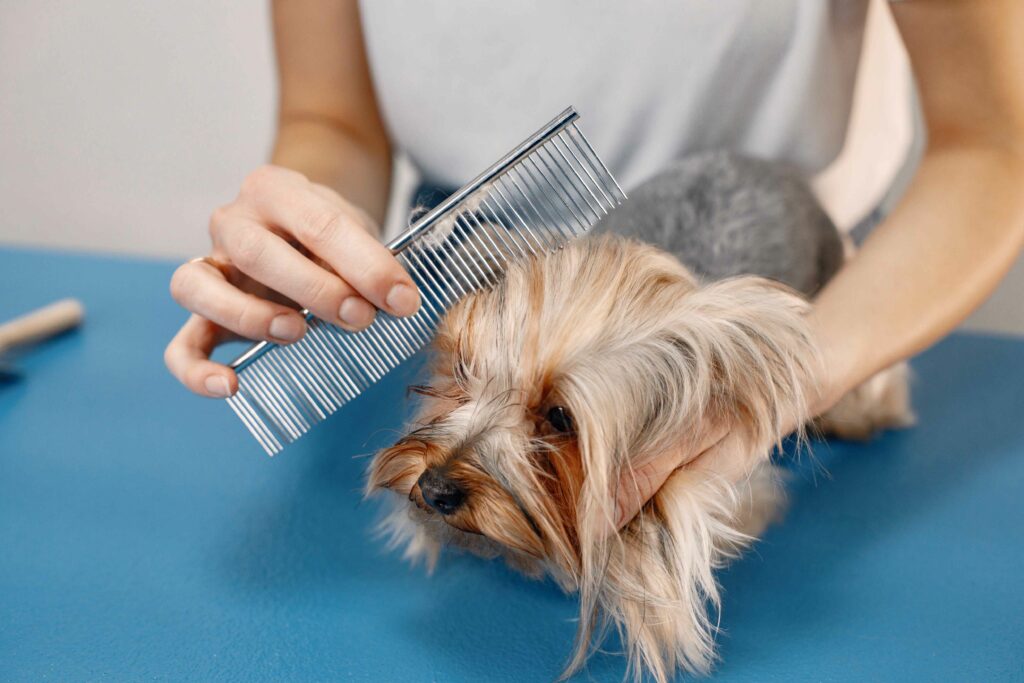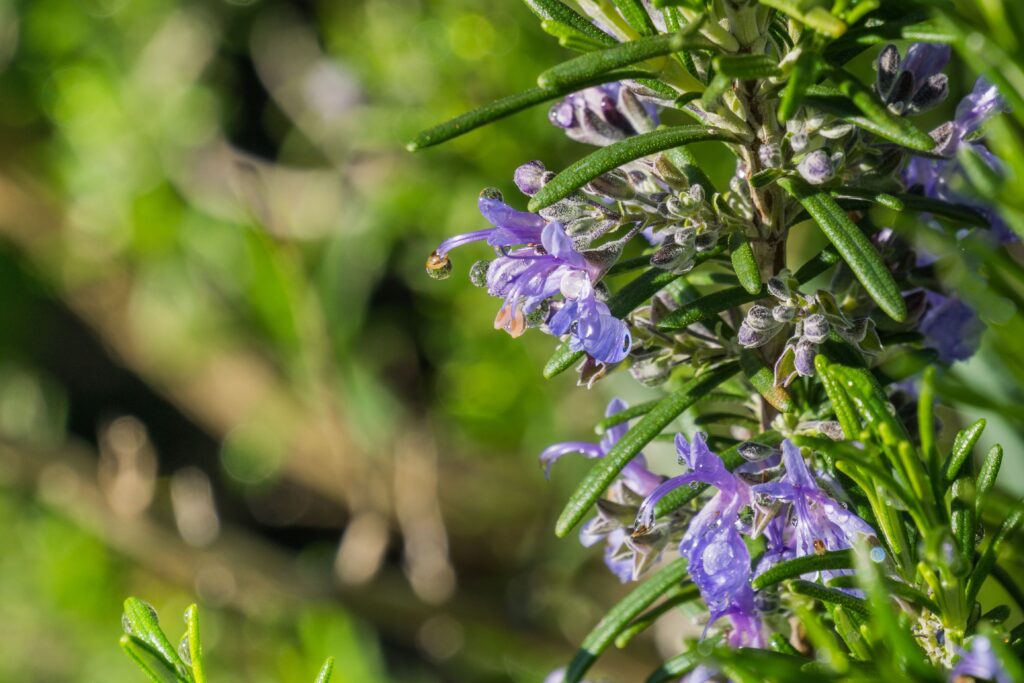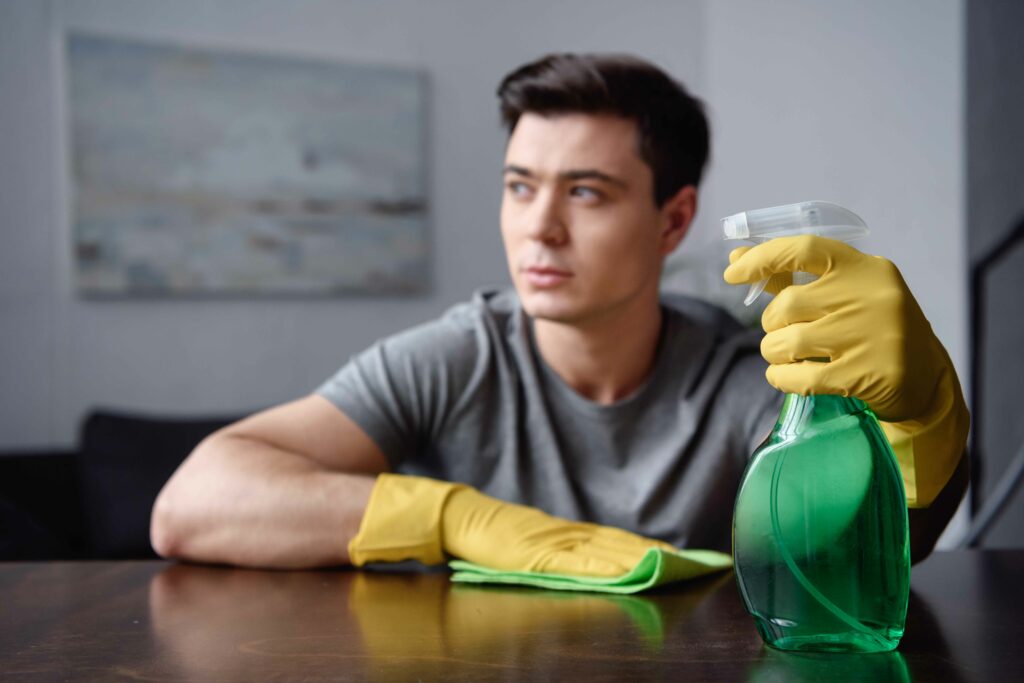Fleas, those tiny, blood-sucking insects that make both pets and humans itch, are unfortunately very common. These minuscule creatures belong to the order Siphonaptera and have been pestering us for centuries. Fleas are tiny bugs that bother many animals, including our pets. There are more than 2,500 types of fleas around the world.
Fleas can cause problems for pets such as discomfort, skin infections, and the transmission of diseases. For humans too, flea bites can lead to redness, swelling, and incessant itching.
It’s not only the bites we need to worry about; fleas have a remarkable ability to reproduce rapidly. A single adult female flea can lay hundreds of eggs in her short lifespan of two to three months.
Natural Methods to Repel Fleas: A Holistic Approach to Flea Control
Embark on a journey to explore effective and environmentally friendly flea control with insights into natural methods to repel fleas. Discover a range of strategies, from maintaining a clean living environment to incorporating natural repellents, ensuring a comprehensive approach to keeping fleas at bay.
Essential Oils for Flea Control: Harnessing Nature’s Remedies
Dive into the world of aromatherapy as we discuss the use of essential oils for flea control. Uncover the power of natural oils like lavender and peppermint in repelling fleas while maintaining a pleasant atmosphere. Explore safe and aromatic solutions for a home free from fleas.
Homemade Flea Sprays and Repellents: Crafting Your Defense Against Fleas
Empower yourself with the knowledge of creating effective flea solutions at home with insights into homemade flea sprays and repellents. Learn to concoct safe and efficient sprays using common household ingredients, providing an affordable and natural alternative to commercial flea products.
Natural Flea Treatments for Pets: Nurturing Your Pet’s Well-being
Discover a world of natural care for your pets as we explore natural flea treatments for pets. From herbal baths to dietary considerations, understand how to prioritize your pet’s well-being while effectively managing and preventing flea infestations the natural way.
Using Diatomaceous Earth for Flea Control: A Natural and Mineral-Based Solution
Delve into the unique properties of diatomaceous earth as a natural and mineral-based solution for flea control. Learn how using diatomaceous earth for flea control can be a safe and effective method, both for your living environment and as part of your pet care routine.
Importance of Finding Natural Remedies for Flea Control
When looking for ways to control fleas, it’s important to think about natural options instead of only using strong chemicals. Typical flea control often uses strong chemicals that can be harmful to both pets and people.
Using these chemicals a lot can make fleas resistant and harm the environment. Natural remedies help us fight fleas without hurting our loved ones or the planet.
Choose natural methods like herbal sprays or DIY solutions with common items like vinegar or lemon juice. This way, you kill fleas naturally and keep your pets safe from chemical treatment side effects. Using natural remedies lets you be proactive in preventing fleas instead of only reacting when there’s an infestation.
Add these remedies to your pet care routine to make your home less appealing to fleas. This reduces the chance of future infestations. Explore eco-friendly methods for getting rid of fleas without harmful chemicals to solve the problem once and for all.
Understanding Flea Life Cycle
Explanation of the Four Stages: Egg, Larva, Pupa, and Adult Flea
To effectively combat fleas and keep your furry friends flea-free, it is crucial to understand the intricate life cycle of these pesky parasites. The flea life cycle consists of four distinct stages: egg, larva, pupa, and adult flea. Let’s explore each stage in detail.
The first stage is the egg stage. Female fleas lay eggs on their hosts (your pets) or in infested areas like pet beds or carpets.
These minuscule eggs are not easily visible to the naked eye and can scatter all over your home. A single female flea can lay hundreds of eggs during her lifespan.
Once the eggs hatch into larvae, they enter the second stage. These larvae are tiny and worm-like but lack eyes and legs.
They feed on organic debris such as pet dander or microscopic remains found in infested areas. Larvae tend to avoid sunlight and burrow into dark corners or deep within carpets for protection.
After feeding for a few days, larvae make a cocoon and go into the third stage, called pupae. Here, they transform into a protective casing, keeping them safe from things like pest control or natural flea remedies you might use at home.
When things are good, like vibrations showing possible hosts, adult fleas come out of their cocoons. They’re now adults looking for their next blood meal, often from your pets! Adult fleas can jump really well, making it easy for them to grab onto passing animals.
Insight into the Duration of Each Stage and How It Affects Flea Control Methods
Understanding how long each stage lasts is essential for effective flea control strategies. The time it takes for fleas to go through their life cycle changes with temperature and humidity. Usually, it’s 2 to 3 weeks on average, but it might take more time in not-so-good conditions.
Eggs typically hatch within 1 to 10 days, depending on environmental conditions. Once larvae emerge, they undergo multiple molts over a period of about 5 to 18 days before entering the pupal stage.
Pupae can remain dormant for as little as 5 days or up to several months until they detect suitable host vibrations. This life cycle duration poses a challenge when dealing with fleas.
Flea control methods must target each stage in order to break the cycle effectively. Merely eliminating adult fleas won’t prevent future infestations since dormant pupae can hatch weeks or even months later.
To fight fleas effectively, pet owners should do a few things. To fight fleas, do regular grooming and deep cleaning with safe remedies like diatomaceous earth or lemon juice sprays. Use natural flea repellents like essential oils mixed with coconut oil. Understand the flea life stages and durations to break the cycle and keep your pets and home free from these annoying pests.
Prevention is Key
Importance of regular grooming and hygiene practices for pets

To keep your pets happy and healthy, grooming is crucial for preventing fleas. These pesky creatures like to bother our pets, causing discomfort and health problems. Make simple grooming habits a routine for your pet to create an unfriendly environment for fleas.
Start by regularly brushing your pet or dog’s coat, with a fine-toothed comb or flea comb. This not only helps to remove any existing fleas but also enables you to spot any signs of infestation early on.
Remember to focus on the areas where fleas tend to hide, such as behind the ears, around the tail, and under the belly. Bathing your pets regularly is another essential practice that helps repel fleas and keep their skin clean.
Use shampoo made for pets, not humans, to avoid harmful ingredients. For a natural flea repellent, add a few drops of lavender or rosemary essential oils to their shampoo; these oils keep fleas away.
Fleas not only target our furry pals but also love making themselves at home in our living spaces. To prevent fleas or an infestation from taking root inside your home, regular cleaning is crucial. Start by vacuuming carpets, rugs, furniture, and other areas where your pet spends time.
Vacuum to get rid of adult fleas and stop their life cycle. Wash your pet’s bedding in hot water every week to kill any hidden flea eggs or larvae in the fabric.
Be sure not to overlook this step as it ensures that even the smallest pests are eliminated. Additionally, consider using cedar chips inside your pet’s bedding – their smell naturally repels fleas and other biting insects.
Outdoor areas should not be neglected either. Keep grass and shrubs trimmed short to minimize flea hiding spots and exposure for your pets.
Regularly remove any leaf litter or debris where fleas may seek shelter. If you have a backyard, consider using nematodes—a type of microscopic worm that feeds on flea larvae—as a natural pest control method.
Keep your pets groomed and your indoor and outdoor spaces clean. This makes it hard for fleas to thrive. Preventing fleas is the key to keeping our furry friends comfortable and healthy.
Natural Flea Repellents for Pets
Essential Oils with Flea-Repelling Properties
When it comes to repelling those pesky fleas, essential oils can be a powerful weapon. Lavender, lemon, and eucalyptus are three essential oils known for their flea-repelling properties.
Not only do they smell delightful to us humans, but they also act as natural deterrents against fleas. These oils work by interfering with the flea’s sensory receptors and disrupting their ability to locate hosts.
How to Dilute Essential Oils for Safe Use on Pets
While essential oils are effective against fleas, it’s crucial to dilute them properly before applying them to your furry friends. Never use undiluted essential oils on pets as they can be irritating or even toxic.
To create a safe and effective solution, mix a few drops of the chosen essential oil with a carrier oil such as olive oil or coconut oil. Generally, a ratio of 1-2 drops of essential oil per ounce of carrier oil is recommended.
Application Methods
There are various ways you can use these diluted essential oils to repel fleas from your dogs naturally or pets. One popular method is creating a homemade flea spray. Simply mix the diluted essential oil with water in a spray bottle and lightly mist your pet’s coat.
Be sure not to saturate their fur or get the solution in their eyes or mouth. Another option is using flea collars infused with these natural oils.
These collars emit a gentle scent that repels and kills fleas without harming your pet. Additionally, you can add a few drops of diluted essential oil into your pet’s shampoo during bath time for added protection against fleas.
Herbal Remedies as Natural Alternatives

If you’re seeking natural alternatives to essential oils, herbal remedies can be a fantastic option. Neem oil and rosemary are two herbal remedies that have been used for centuries to repel fleas.
Benefits and Precautions when using Herbal Remedies
Neem oil, extracted from the neem tree, contains compounds that disrupt the life cycle of fleas, making it an effective, natural flea remedy. Dilute a small amount of neem oil with water or a carrier oil and apply it to your pet’s coat as needed. However, please note that neem oil should not be ingested by cats.
Rosemary is another herb known for its flea-repelling properties. You can create a simple herbal flea spray by steeping fresh or dried rosemary in boiling water overnight.
Once cooled, strain the liquid into a spray bottle and spritz your pet’s coat lightly. Keep in mind that some pets may be sensitive to certain herbs, so monitor their reactions closely after application.
Check with your vet before using essential oils or herbal remedies on your pets to make sure they’re safe. In your pet’s monthly grooming, use natural flea repellents to keep away fleas without harsh chemicals in commercial products.
Home Remedies for Flea Control
Homemade flea sprays using vinegar or lemon juice

Fleas are pesky little critters that can wreak havoc on our beloved pets and homes. Luckily, there are natural remedies that can help keep these blood-sucking pests at bay. One popular option to treat fleas is homemade flea sprays made with simple ingredients like vinegar or lemon juice.
To create a basic flea spray, mix equal parts of water and vinegar or lemon juice in a spray bottle. Shake the mixture well until it’s thoroughly combined.
You can also add a few drops of essential oils like lavender or eucalyptus for added effectiveness and to give it a pleasant scent. When applying the spray, make sure to cover your pet’s entire body, focusing on areas where fleas tend to hide, such as around the neck, ears, and tail.
Be careful to avoid spraying near their eyes and mouth. Additionally, you can lightly mist your pet’s bedding, carpets, and furniture with the homemade flea spray.
Homemade sprays can help keep fleas away for a bit, but they might not get rid of a big flea problem. For serious infestations or ongoing flea issues, it’s best to talk to a professional pest control service.
Diatomaceous earth as a non-toxic option for treating carpets and furniture

Consider using diatomaceous earth (DE) as a natural remedy for fleas at home. This powder, made from fossilized algae-like organisms called diatoms, dehydrates fleas when it touches them.
To use DE effectively against fleas, begin by thoroughly vacuuming all carpeted areas and furniture where fleas may be present. Once the surfaces are clean, sprinkle a thin layer of DE evenly over these areas.
Take care to avoid inhaling the dust while applying it, as it can irritate your lungs. Allow the diatomaceous earth to sit overnight, allowing it time to work on killing fleas and their larvae.
The next day, use a vacuum cleaner to remove the powder along with dead fleas and eggs. Repeat this process every few days until you notice a significant improvement in your flea problem.
Diatomaceous earth is usually safe for humans and pets if used right, but be cautious. Don’t put DE where pets groom a lot, and make sure they don’t breathe in too much dust when you use it.
Treating Flea Infestations Naturally
Natural flea baths with ingredients like apple cider vinegar or dish soap
For natural flea treatment, a calming flea bath is great. You can also use simple kitchen items – apple cider vinegar and dish soap. Apple cider vinegar repels fleas with its acidity, and dish soap helps drown them by acting as a surfactant.
To prepare this natural flea bath, simply mix equal parts of warm water and apple cider vinegar in a large basin or bathtub. Add a few drops of gentle dish soap and stir well to create a soapy solution.
Before placing your pet into the bath, wet them thoroughly with warm water. Then, carefully immerse your furry friend in the mixture, making sure to keep their head above water.
Recipe variations based on pet size
The recipe for this natural flea bath can be adjusted according to the size of your pet. For smaller pets like cats or small dogs, you can use 1 cup of warm water with 1/4 cup each of apple cider vinegar and dish soap. For larger dogs, increase the proportions accordingly; for example, you might use 4 cups of water with 1 cup each of apple cider vinegar and dish soap.
A flea bath is important, but just bathing may not kill all flea stages. Also, treat their bedding and surroundings together for thorough flea control.
Conclusion
Fleas can be stubborn and harmful to pets and us. But, using natural remedies and the right knowledge, we can fight fleas without using harmful chemicals.
By incorporating natural flea baths using ingredients like apple cider vinegar and dish soap, you can directly address the adult fleas present on your pet’s fur. Remember to adjust the recipe based on the number of fleas on your pet for optimal effectiveness.
Use holistic methods like diatomaceous earth or cedar chips on pet bedding and in their environment. Keep your home clean, groom your pet regularly, and use natural flea control to cut down on fleas.
Enjoy peace of mind knowing that you are taking a proactive approach that not only eliminates fleas but also promotes overall wellness for your furry companions. Embrace the power of nature as you create a safe and harmonious space free from pesky fleas!
Frequently Asked Questions:
A mixture of vinegar and baking soda can serve as a potent homemade flea killer.
To get rid of fleas naturally, use methods like diatomaceous earth, essential oils, and frequent vacuuming.
Fast elimination of fleas from your house involves thorough cleaning, vacuuming, and using flea control products.
Spraying a mixture of lemon juice and water or using nematodes are effective home remedies for getting rid of fleas in your yard.








